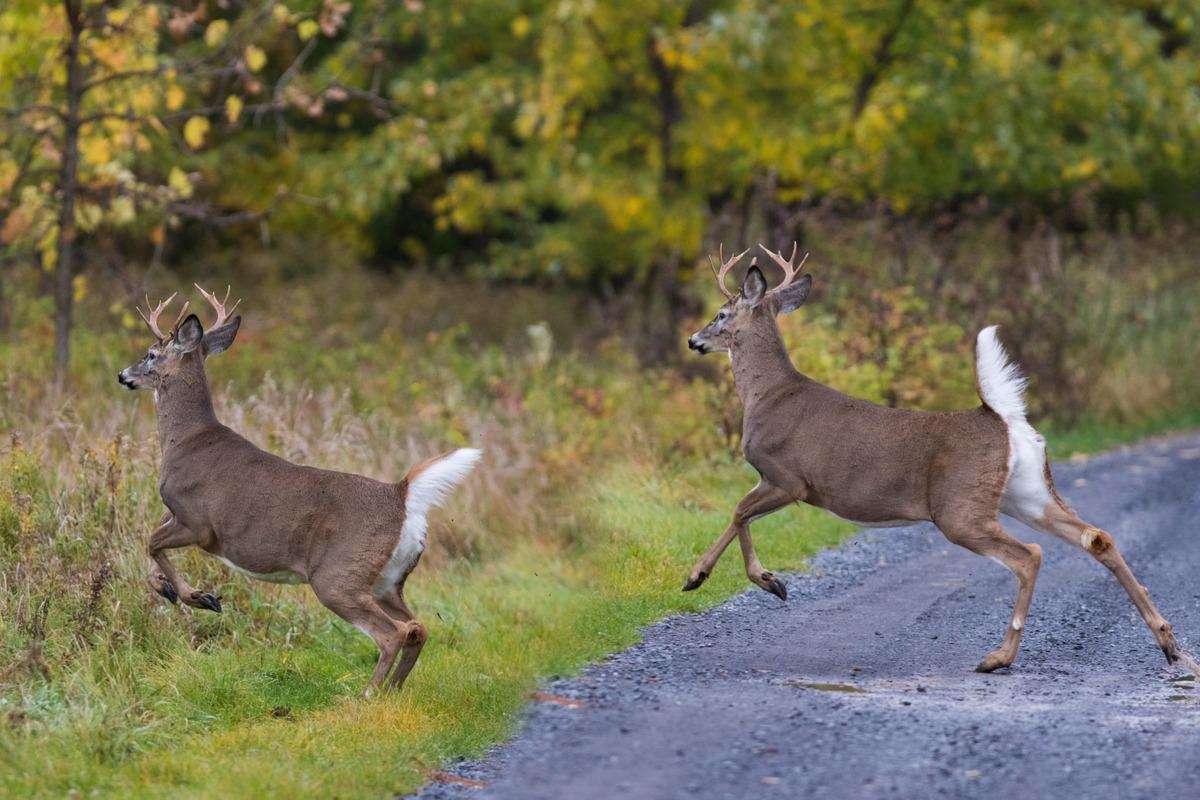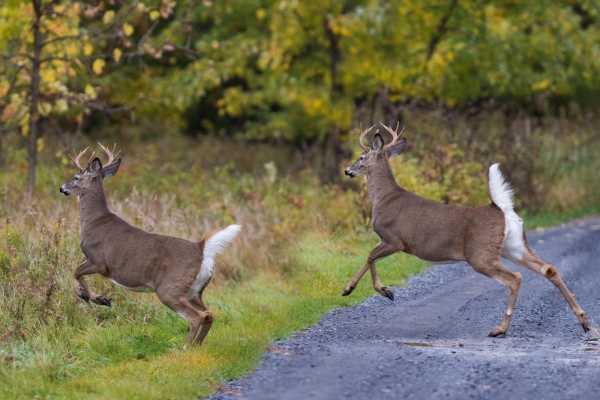In a recent study posted to the bioRxiv* preprint server, an interdisciplinary team of researchers from the United States (US) detected evidence for severe acute respiratory syndrome coronavirus 2 (SARS-CoV-2) Omicron variant exposure in the white-tailed deer population inhabiting Staten Island in New York.
 Study: Detection of SARS-CoV-2 Omicron variant (B.1.1.529) infection of white-tailed deer. Image Credit: Mircea Costina/Shutterstock
Study: Detection of SARS-CoV-2 Omicron variant (B.1.1.529) infection of white-tailed deer. Image Credit: Mircea Costina/Shutterstock
Studies have revealed high susceptibility of white-tailed deer (Odocoileus virginianus) for SARS-CoV-2 infection with several reports of spillover of SARS-CoV-2 from humans to free-living deer. The SARS-CoV-2 B.1.1.529 Omicron variant of concern (VoC) is highly transmissible among humans; however, its ability to infect and cause spillover in animals remains a challenge and has not been documented in detail.
This study is designed to understand the evolutionary trajectory of the SARS-CoV-2 Omicron variant in white-tailed deers.
Study design
In this study, white-tailed deer were sampled opportunistically in Staten Island, New York, between December 12, 2021, and January 31, 2022. A Surrogate Virus Neutralization Test (sVNT) was performed to detect for anti-SARS-CoV-2 neutralizing antibodies, and deers with >30% inhibition were considered positive for the virus.
An indirect enzyme-linked immunosorbent assay (iELISA) was used to measure antibody titers against the receptor binding protein (RBD) and SARS-CoV-2 nucleocapsid (N) and spike (S) proteins. For the detection of SARS-CoV-2 viral ribonucleic acid (RNA), a reverse transcriptase-polymerase chain reaction (RT-PCR) was performed on swab samples of deers.
Swab samples were tested by a TaqPath kit which targets the ORF1 ab gene (open reading frame), S gene, and N gene of SARS-CoV-2 as the primary screen for the Omicron variant. SARS-CoV-2 whole-genome sequencing was performed on total RNA isolated from the swab sample and libraries of sequences were prepared according to the ARTIC Ncov-2019 protocol. SARS-CoV-2 genomes were assembled by the SARS-CoV-2 BV-BRC assembly service using a SARS-CoV-2 variant-calling pipeline. Genetic lineages and variants of concern (VoC) were designated and identified by the Pangolin version. Single nucleotide polymorphisms (SNPs) were identified by the vSNP analysis program.
Findings
The researchers determined the previous exposure of SARS-CoV-2 by serum sampling of 131 individual deers. The majority of the samples were from male deer (88.5%) due to the design of sampling targeting males with age distribution inclined towards a younger age group. Over 62% of the sample constituted as fawns, more than 25 % yearling deer, while only 12% were adults.
The researchers observed that of the 131 serum samples of individual deers, 14.5% were positive for SARS-CoV-2 exposure as measured in sVNT, with a viral inhibition range from 33.2% to 97% (median value -70.9%). The proportion of SARS-CoV-2-specific neutralizing antibody prevalence was observed to be higher in yearlings (39.4%) as compared to fawns and adults (4.9%, and 12.5%, respectively).
Whole-genome sequencing of the four RT-PCR positive samples confirmed the presence of Omicron lineage in white-tailed deer which was the dominant circulating lineage (approximately 90%) in humans in New York between December 2021 and January 2022.
Phylogenetic analysis showed that the sequence clusters matched with the Omicron sequence in humans in New York, and with environmental sources in Austria, but were quite diverse from previously recovered isolates from the deers free living in Ohio, Iowa, and other 13 US states that have been deposited in the Global Initiative on Sharing All Influenza Data (GISAID). Viral genomes from samples 102, 103, and 104, sampled at the same location and date, had 5-6 SNPs in line with the common infection source and transmission between individual animals. While viral genome from fawn 2067, sampled after one day from different locations, showed 9-12 SNPs, reflecting the diverse source of infection points.
In the TaqPath multiplex assay, there was ORF1a/b gene amplification and a drop in the S gene, suggesting the presence of Omicron; however, in the majority of samples, an unusual dropout in the N-gene or a shift in the cycle threshold (Ct) value was observed.
The researchers found that one RT- PCR positive yearling male (number 2089) had a high level of neutralizing antibodies with 78.7% inhibition, suggesting serological conversion of these animals after prior exposure to the virus, but was still susceptible to re-infection, as observed in humans.
Conclusion
The findings of this study provided strong evidence of SARS-CoV-2 Omicron infection in white-tailed deer on Staten Island, New York.
The study highlighted an unmet urgent need for comprehensive surveillance of susceptible wild animal species who are at risk of SARS-CoV-2 infection, to understand the network of ecological transmission, and to further better assess the potential risk of SARS-CoV-2 spillback from humans to animals, and from animals to humans. Further, the expanding range of hosts of SARS-CoV-2 in animals and the environment needs to be identified.
*Important notice
bioRxiv publishes preliminary scientific reports that are not peer-reviewed and, therefore, should not be regarded as conclusive, guide clinical practice/health-related behavior, or treated as established information.
- Kurt J. Vandegrift, et al. (2022). Detection of SARS-CoV-2 Omicron variant (B.1.1.529) infection of white-tailed deer. bioRxiv. doi: https://doi.org/10.1101/2022.02.04.479189 https://www.biorxiv.org/content/10.1101/2022.02.04.479189v1
Posted in: Medical Research News | Medical Condition News | Disease/Infection News
Tags: Antibodies, Antibody, Assay, Coronavirus, Coronavirus Disease COVID-19, CT, Enzyme, Gene, Genetic, Genome, Influenza, Nucleotide, Omicron, Polymerase, Polymerase Chain Reaction, Protein, Receptor, Respiratory, Reverse Transcriptase, Ribonucleic Acid, RNA, SARS, SARS-CoV-2, Severe Acute Respiratory, Severe Acute Respiratory Syndrome, Single Nucleotide Polymorphisms, Syndrome, Virus

Written by
Sangeeta Paul
Sangeeta Paul is a researcher and medical writer based in Gurugram, India. Her academic background is in Pharmacy; she has a Bachelor’s in Pharmacy, a Master’s in Pharmacy (Pharmacology), and Ph.D. in Pharmacology from Banasthali Vidyapith, Rajasthan, India. She also holds a post-graduate diploma in Drug regulatory affairs from Jamia Hamdard, New Delhi, and a post-graduate diploma in Intellectual Property Rights, IGNOU, India.
Source: Read Full Article
